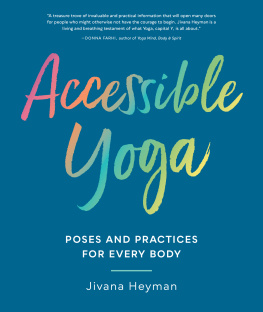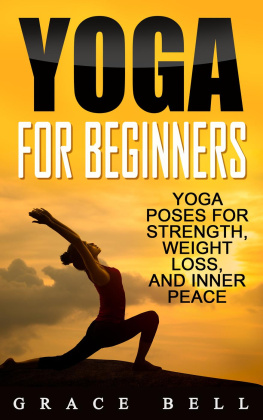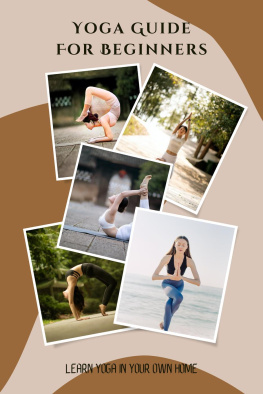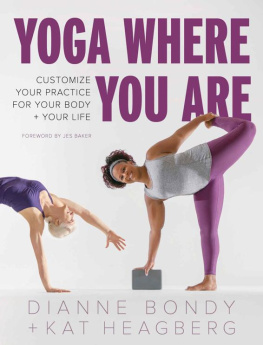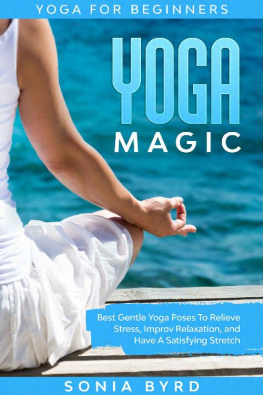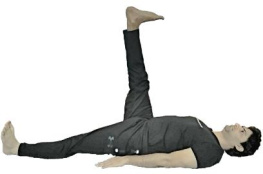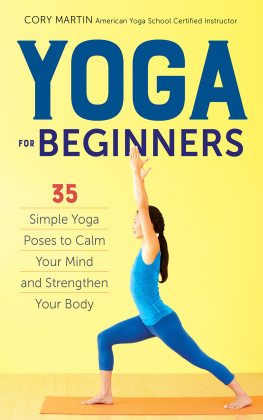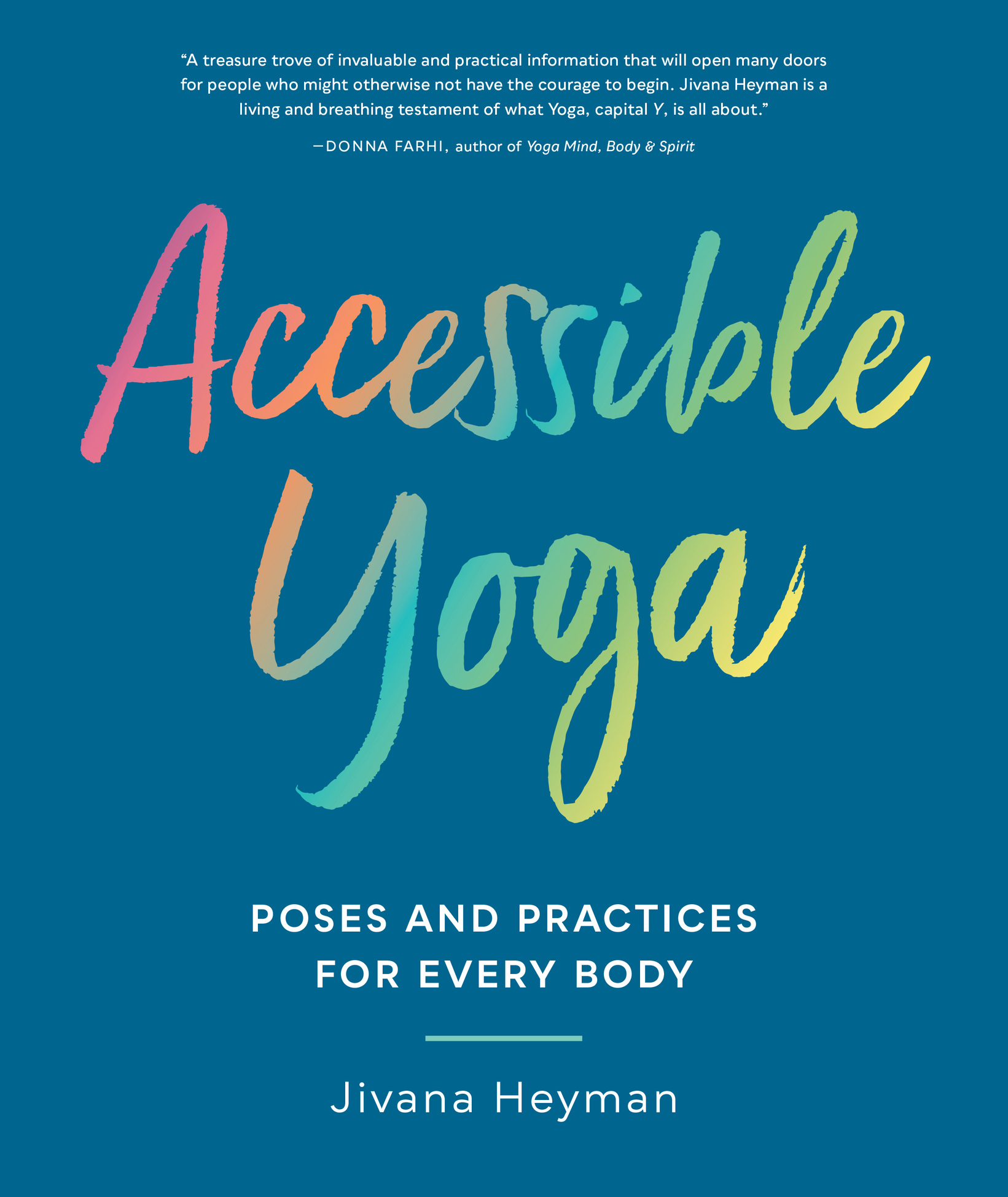Shambhala Publications, Inc.
The content of this book is not intended as medical advice. Please seek approval from your health care practitioner before attempting any of the methods described here.
2019 by J. Heyman
Painting on by Joseph Rogers. All other photos by Sarit Z. Rogers. The author thanks Coleman Barks for permission to use his translation of Love Dogs by Rumi.
The names and details of students described have been changed to protect their privacy.
All rights reserved. No part of this book may be reproduced in any form or by any means, electronic or mechanical, including photocopying, recording, or by any information storage and retrieval system, without permission in writing from the publisher.
Names: Heyman, Jivana, author.
foreword by Matthew Sanford; photos by Sarit Rogers.
Description: First edition. | Boulder: Shambhala, 2019. | Includes
bibliographical references and index.
(paperback: alk. paper)
Subjects: LCSH: Yoga. | YogaTherapeutic use.
FOREWORD
WHEN I STARTED practicing yoga in 1991, I got extraordinarily lucky. There was no path to follow, no signposts, no whispers in ancient texts, and no how-to book. There was no Internet flush with magical search engines, no social media posts, no Instagram, and no Facebook. I was lucky enough to meet an amazing, big-hearted Iyengar yoga teacher named Jo Zukovich. We didnt know what to do, but she was confident enough to make me a partner in a great experiment. We explored yoga and disability together.
In 1978, at age thirteen, I was injured in a car accident that killed my father and sister and rendered me completely paralyzed from the chest down. By the time I started practicing yoga twelve years later, I was sick of the Western medical model. I was sick of doctors, of interventions, of physical and occupational therapy, of always being treated like a patient by everyone just because I was disabled. Thankfully, Jo didnt do this. She did not let fear of my otherness get in the way of our yogic study. She helped me become a yoga student just like any other yoga student, except different.
The fact is that yoga, and in particular asana, looks different when it travels through my paralyzed body. On the outside, my poses rarely look as they would if I were a traditional yoga student (whatever that is). On the inside, however, my poses are forged with the timeless heart of yoga. The principles of yoga and asana do not discriminate. Yoga poses do, that is, unless the poses are made accessible to all comers. This simple insight led me to become a yoga teacher, found the nonprofit Mind Body Solutions, and dedicate my life to opening yoga for everyone
This is a vision that I share with Jivana Heyman, the author of this book. Jivana came to the importance of making yoga accessible to all from a different path than I did. Beginning as a social activist, he has been advocating for equal and fair treatment for all people throughout his adult life. At heart, I believe Jivana experienced the healing power of yoga in his own life and is now working to ensure that potential for everyone. He is a man of service with one of the kindest hearts and noblest visions that I have encountered. I have watched him work tirelessly, building not just his organization and trainings, but an international movement aiming to open the door of yoga in all directions and to all people. Whats not to like?
The sacred heart of yoga is inclusive, giving, and ultimately offers transcendent healing to everyone willing to practice. With this book, Jivana has done an enormous service. He has created a runway to the healing potential of yoga for all people. This is the book I needed back in 1991. It would have given me the courage to begin. It also would have helped me know that I was not alone, that someone does in fact care about the potential yoga students not living in the mainstream. Most important, this book would have helped me know that I belong in the ever-growing community of yogis both past and present.
Matthew Sanford
ACKNOWLEDGMENTS
IM TAKING the unusual step of starting to write this book with the acknowledgments, because it could not have happened without the love and dedication of so many people. The Accessible Yoga movement has grown into something I could never have imagined, and there are so many people to thank for that. So many people that I cant begin to thank them allalthough this will be a very long and very incomplete list!
I have to begin with my husband, Matt, who after twenty-five years, is still loving and patient with me. And our children, Charlie and Violet, who are my teachers.
This book is dedicated to my mother, who died recently, and to her passion for books, which always inspired me to want to write one. Im so glad that she knew about this project before she passed. Its also dedicated to my father; my stepmother, Judy; my siblings, Jenny and Mike, Tim, Chris and Anna, and Amanda and Greg; and my uncle Gary, cousin Alexa, and nieces and nephews; and my in-laws, Rick and Charlie.
Special thanks to Sarit Rogers for her amazing photographs. She has the innate ability to capture both the spiritual and political with her camera. And she can do so in a captivating way that makes you feel comfortable and grounded as a subject and as a viewer. Thank you to De Jur Jones, the main model for the book. She is a powerful teacher who is able to transmit the essence of yoga through her very being. Thank you Melanie Williams for your amazing support during this process.
The idea for this book was crafted with Kathleen Kraft and Mary Beth Ray. Special thanks to my writing support team: Linda Sparrowe, for her passion, and Nina Zolotow, for her clarity. Some of these writings also appeared in Yoga Internationals website, and Im very grateful for the organizations support. In particular, I want to thank Kat Heagberg for her editing and handstand skills.
I am so grateful to Beth Frankl, Breanna Locke, Peter Schumacher, Karen Steib, and the entire Shambhala Publications team. You made this easy, and thats saying a lot!
Accessible Yoga is in many ways a child of Integral Yoga and the AIDS epidemic. Integral Yoga is the school my teacher Swami Satchidananda created when he came to the United States in the sixties. When he arrived, he saw that Westerners needed an adapted yoga practice, and thats what he created. Im so grateful to him and to all my teachers who helped me understand the nature of yoga: Kazuko Onodera, Swami Vimalananda, Swami Karunananda, Swami Asokananda, Swami Divyananda, Swami Vidyananda, Swami Suddhananda, Swami Sarvaananda, Nischala Joy Devi, Jnani Chapman, Vidya Vonne, Arturo Peal, Sonia Sumar, Eric Small, and many others.
Thank you to my mentors and dear friends Swami Ramananda and Cheri Clampett, who support me endlessly and listen to me patiently. Their guidance has been invaluable.

